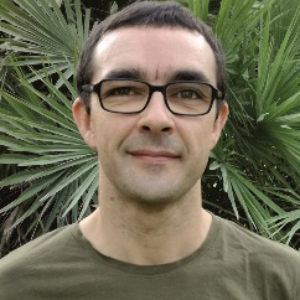Title : Photocatalytic production of hydrogen from biomass or wastewaters using solar energy
Abstract:
Hydrogen, a key chemical for manufacturing processes, and a clean source of energy for fuel cells, is mainly produced from fossil gas and oil, a fact which calls for alternative routes. Biomass-derived feedstocks offer a distinct possibility for this technological challenge. However, typical thermocatalytic biomass-to-hydrogen processes are energy intensive and their selectivities are often moderate. Sunlight-driven photocatalysis represents a promising alternative, given their mild operation conditions and the small extent of substrate degradation involved.
The processes considered in our research team imply the use of processed lignocellulose, resulting in aqueous streams containing a range of biomass-derived substances. In particular, the substrates we study may derive from either of the following: (1) hydrolysis, (2) pyrolysis, or (3) industrial or domestic activities which generate wastewaters. Lightpromoted photocatalytic reforming (photoreforming) of such aqueous streams on titania-supported metal photocatalysts (M/TiO2 ) is then carried out to produce hydrogen.
In general, where the processes start from raw lignocellulose (1 and 2), treatment leads to deconstructed chemical entities of lower structural complexity, ideally mono- and oligomers, which are then subjected to photoreforming for H2 generation, whereas direct use of wastewaters combines remediation with energetic valorization of residual organic substances.
The synthesis of the photocatalytic materials is performed by impregnation or deposition-precipitation of the desired metal (Au, Pd, Pt, Cu or Ni) on titania, aiming at obtaining materials of small metal nanoparticle sizes (< 5 nm) and high dispersion. The photocatalysts are characterised by standard techniques (powder XRD, TEM, ICP-MS elemental analysis or DURV-Vis spectroscopy). A considerable research endeavour is focused on mechanistic aspects of the photoreforming of model biomass-derived oxygenates (e.g. mono- and oligosaccharides, carboxylic acids or aldehydes).
The ultimate goal of these processes is the extensive yet decentralized valorisation of residual biomass or wastewaters, powered by the harnessing of solar energy for the ultimate goal of producing hydrogen as a valuable energy product.
Audience Take Away:
- Solar production of hydrogen from biomass-derived aqueous streams is a surprisingly versatile and selective strategy.
- Conditions are mild, and solar irradiation is the only energy input.
- Photocatalysts based on Earth-abundant metal co-catalysts, such as copper, can be optimized to boost H2 selectivity and productivity.



